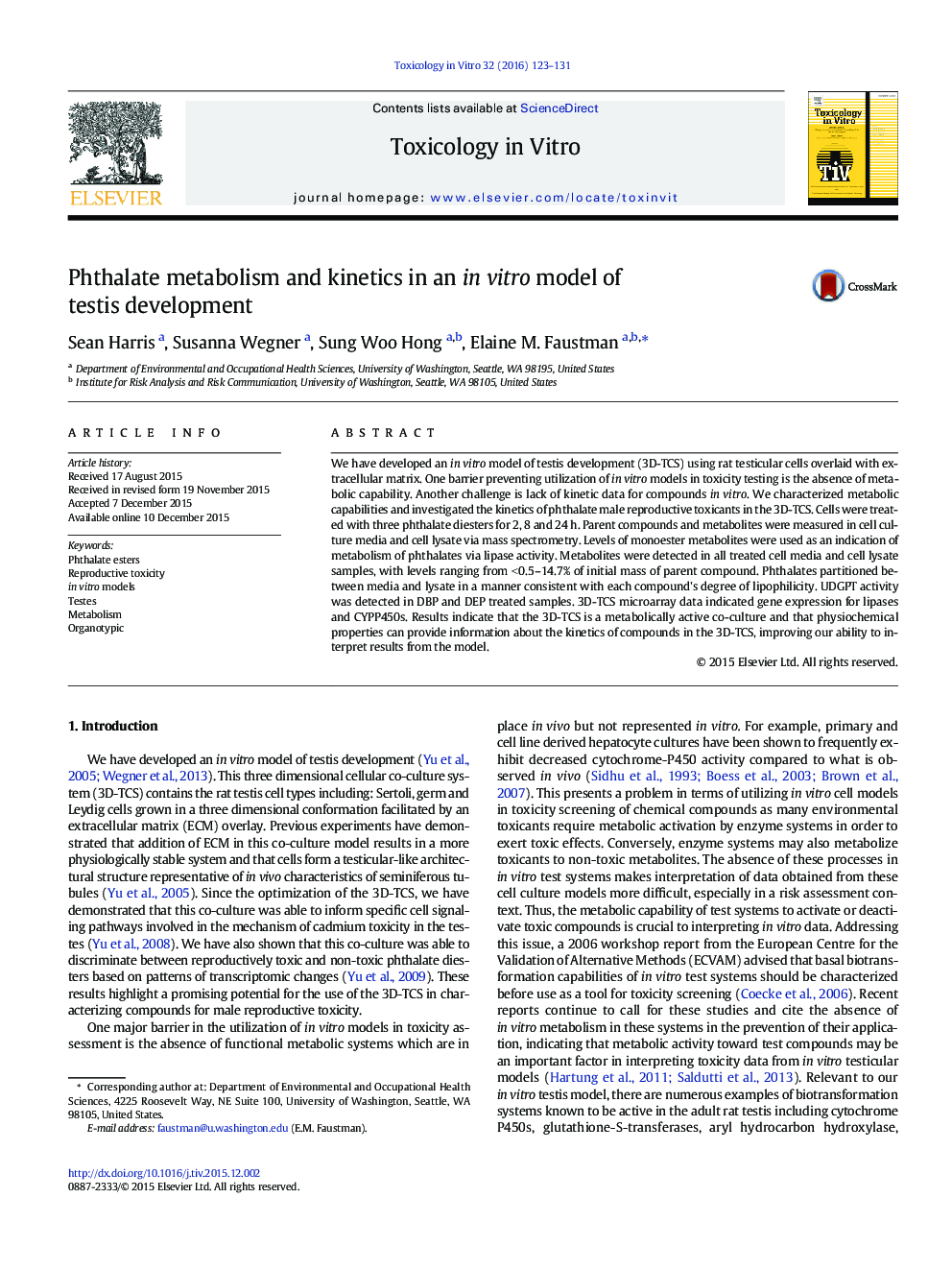| کد مقاله | کد نشریه | سال انتشار | مقاله انگلیسی | نسخه تمام متن |
|---|---|---|---|---|
| 5861255 | 1562713 | 2016 | 9 صفحه PDF | دانلود رایگان |

- Metabolism and kinetics of three phthalate esters were investigated in an in vitro model of male testes development
- Metabolism of phthalates is occurring in the testes model, evidenced by detection of metabolites in cells and cell media
- LogKow was able to predict phthalate diester partitioning between media and cells
- Gene expression signals for key metabolic enzymes were reflective of in vivo conditions and responses to phthalates
- Results indicate that model is metabolically active and physiochemical properties predict phthalate kinetics in the model
We have developed an in vitro model of testis development (3D-TCS) using rat testicular cells overlaid with extracellular matrix. One barrier preventing utilization of in vitro models in toxicity testing is the absence of metabolic capability. Another challenge is lack of kinetic data for compounds in vitro. We characterized metabolic capabilities and investigated the kinetics of phthalate male reproductive toxicants in the 3D-TCS. Cells were treated with three phthalate diesters for 2, 8 and 24Â h. Parent compounds and metabolites were measured in cell culture media and cell lysate via mass spectrometry. Levels of monoester metabolites were used as an indication of metabolism of phthalates via lipase activity. Metabolites were detected in all treated cell media and cell lysate samples, with levels ranging from <Â 0.5-14.7% of initial mass of parent compound. Phthalates partitioned between media and lysate in a manner consistent with each compound's degree of lipophilicity. UDGPT activity was detected in DBP and DEP treated samples. 3D-TCS microarray data indicated gene expression for lipases and CYPP450s. Results indicate that the 3D-TCS is a metabolically active co-culture and that physiochemical properties can provide information about the kinetics of compounds in the 3D-TCS, improving our ability to interpret results from the model.
Journal: Toxicology in Vitro - Volume 32, April 2016, Pages 123-131